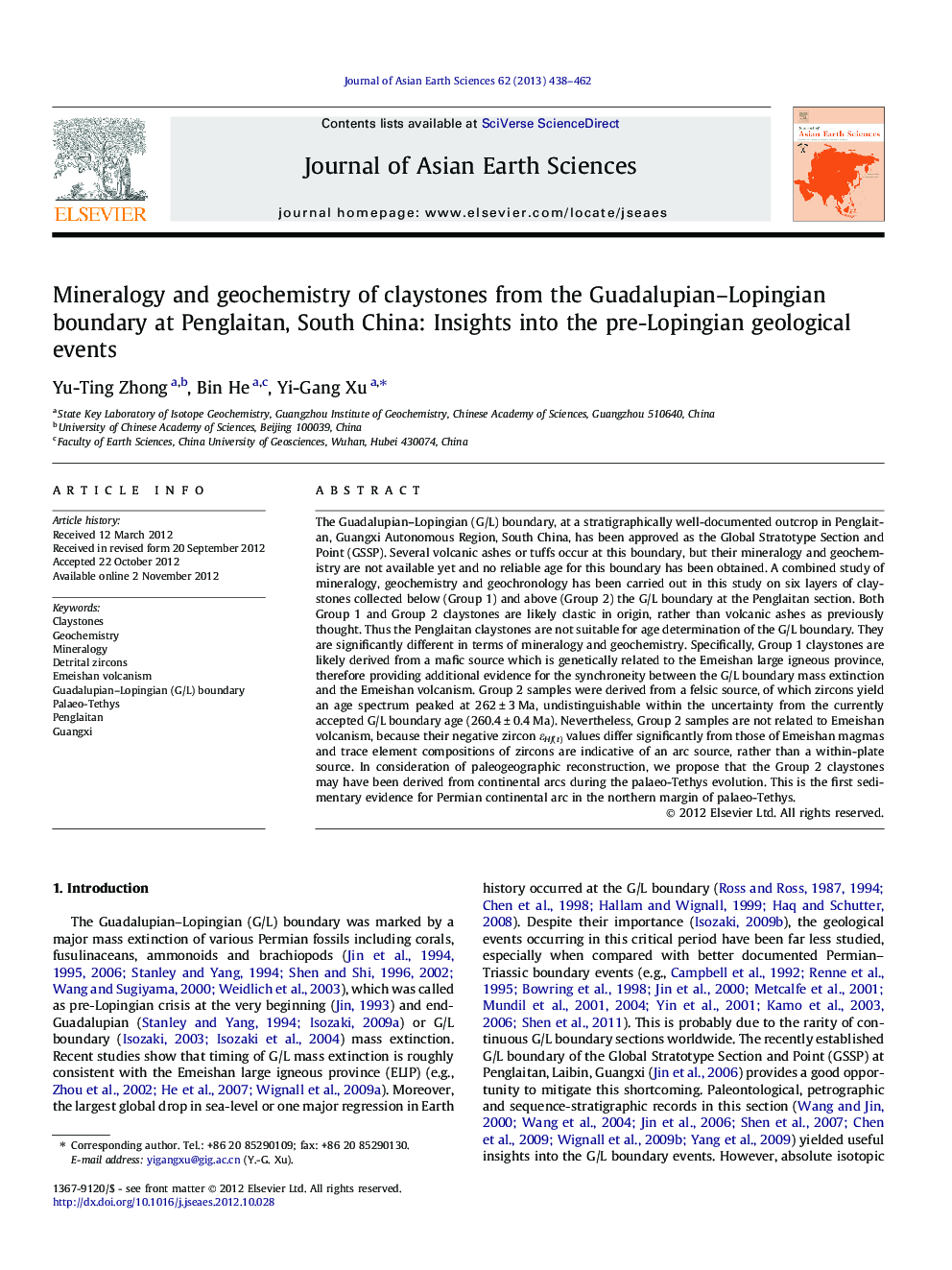| کد مقاله | کد نشریه | سال انتشار | مقاله انگلیسی | نسخه تمام متن |
|---|---|---|---|---|
| 4731288 | 1640403 | 2013 | 25 صفحه PDF | دانلود رایگان |

The Guadalupian–Lopingian (G/L) boundary, at a stratigraphically well-documented outcrop in Penglaitan, Guangxi Autonomous Region, South China, has been approved as the Global Stratotype Section and Point (GSSP). Several volcanic ashes or tuffs occur at this boundary, but their mineralogy and geochemistry are not available yet and no reliable age for this boundary has been obtained. A combined study of mineralogy, geochemistry and geochronology has been carried out in this study on six layers of claystones collected below (Group 1) and above (Group 2) the G/L boundary at the Penglaitan section. Both Group 1 and Group 2 claystones are likely clastic in origin, rather than volcanic ashes as previously thought. Thus the Penglaitan claystones are not suitable for age determination of the G/L boundary. They are significantly different in terms of mineralogy and geochemistry. Specifically, Group 1 claystones are likely derived from a mafic source which is genetically related to the Emeishan large igneous province, therefore providing additional evidence for the synchroneity between the G/L boundary mass extinction and the Emeishan volcanism. Group 2 samples were derived from a felsic source, of which zircons yield an age spectrum peaked at 262 ± 3 Ma, undistinguishable within the uncertainty from the currently accepted G/L boundary age (260.4 ± 0.4 Ma). Nevertheless, Group 2 samples are not related to Emeishan volcanism, because their negative zircon εHf(t) values differ significantly from those of Emeishan magmas and trace element compositions of zircons are indicative of an arc source, rather than a within-plate source. In consideration of paleogeographic reconstruction, we propose that the Group 2 claystones may have been derived from continental arcs during the palaeo-Tethys evolution. This is the first sedimentary evidence for Permian continental arc in the northern margin of palaeo-Tethys.
► The G–LB claystones are clastic in origin, rather than volcanic ashes as previously thought.
► Provide additional evidence for the synchroneity between the G–LB mass extinction and the Emeishan volcanism.
► This is the first sedimentary evidence for Permian continental arc in the northern margin of palaeo-Tethys.
Journal: Journal of Asian Earth Sciences - Volume 62, 30 January 2013, Pages 438–462